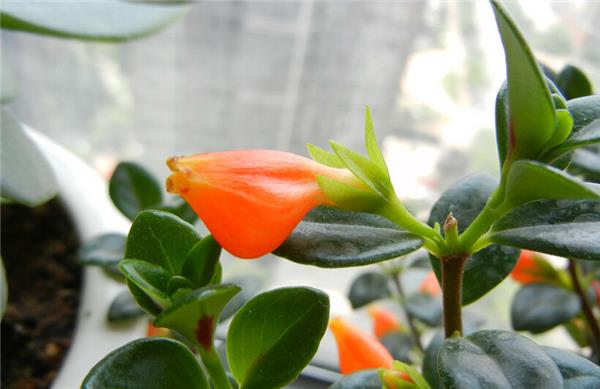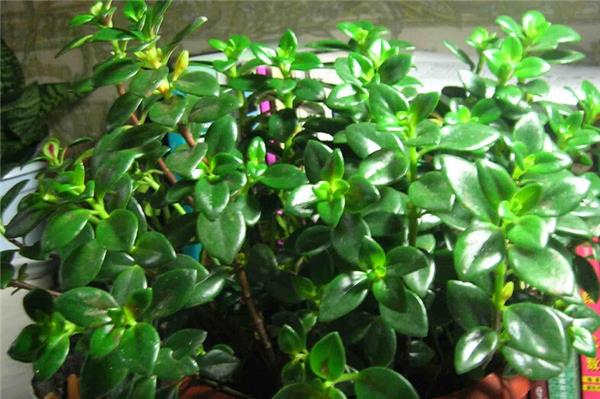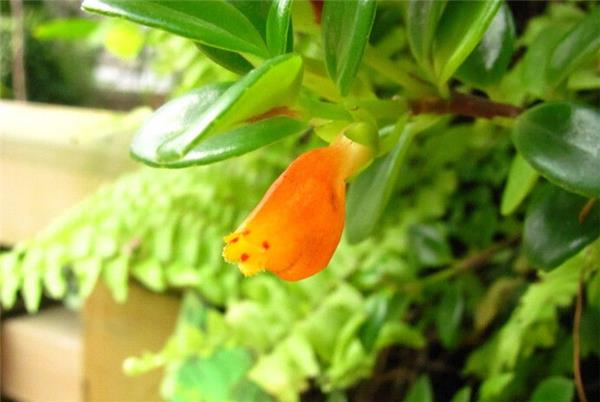Why the long leaves of goldfish orchid don't blossom
Goldfish hanging orchid from a distance is like goldfish leisurely roaming in the green grass, very interesting and lasting, can add a touch of lovely green to the home. But how do you raise it?

Culture method of goldfish Cymbidium
Soil: the substrate soil mixed with rotten leaf soil, stable manure and sand according to the ratio of 3 ∶ 1 ∶ 1, the pH value was 6 to 6.5. Change the basin every other year.
Temperature: the temperature suitable for goldfish hanging orchid growth is 18mur22 degrees Celsius, avoid low temperature. Once the growth temperature of the goldfish orchid is lower than 10 degrees Celsius, the leaves will begin to turn yellow. in the summer high temperature, the growth of the goldfish orchid is very slow, and the leaves will fall when the temperature exceeds 30 degrees Celsius.
Pruning: all weak branches, top branches and overlong drooping branches should be pruned after flowering, and the withered flower stems should be cut off from the base in winter and kept dry, which is beneficial to the germination and growth of new flower branches in the next spring.
Reproduction: goldfish orchid can be sown, cut, split plant method, but because the seeds of goldfish orchid are not easy to obtain, so it is generally used to insert method. The insertion method of goldfish hanging orchid is suitable to be carried out in the two seasons of autumn. About 10 square meters of branches are selected to be inserted into the riverbed to maintain a certain humidity and temperature. It can take root in about a month. After taking root, it is more necessary to strengthen maintenance, and it can be planted in the basin in about 2 months.

When will goldfish orchids blossom?
The florescence of goldfish orchid is in spring and summer, and the florescence is longer. Whenever the flowers bloom, the orange appearance of the goldfish is very lovable, very much like many small goldfish hanging on the tops of the branches.

What if the goldfish hanging orchid doesn't blossom?
Soil: goldfish orchid potted plants require that the substrate is rich in humus, loose and well drained. Peat soil, perlite and vermiculite are commonly mixed, and the soil leaves are slightly acidic to facilitate growth. During the growth period, liquid fertilizer was applied every 1-2 weeks, and phosphorus and potassium fertilizer should be applied at the peak period of growth and flowering.
Moisture: there is a short dormant period in winter, during which the basin soil can be watered less and keep the basin soil properly dry; in winter (that is, the flowering period), it can be watered more appropriately; during the growing period, there should be sufficient moisture, the basin soil should always be wet, and try to improve the air humidity. It is easy to cause soft rot and death of stems and branches when it is hot and humid. If this happens, the soft rot should be cut off in time. Goldfish orchids should be watered more in spring, autumn and summer, so as to make the flowers better.
Lighting: goldfish hanging orchids prefer bright and non-direct light environment, so when the summer light is too strong, it should be shaded (50% shade); in order to promote the formation of flower buds, the sun should be exposed in autumn and keep the basin soil slightly dry; it is best to put it in a dry and cool environment when dormant in winter to promote flower bud differentiation; it is appropriate to increase light before flowering in winter, and move to the brightest window indoors to ensure exuberant growth and flowering.

Goldfish Cymbidium is a perennial herb of the genus Gesneriaceae, with a semi-woody base, which is relatively easy to cultivate. And its flower pattern is very unique and lovely, if raised at home, it can effectively increase the vitality of the bedroom and enhance the bedroom fengshui.
Related
- Wuhan Hospital Iron Tree Blooming Result Was Instantly Frightened by the Gardener Master
- Which variety of camellia is the most fragrant and best? Which one do you like best?
- What is the small blue coat, the breeding methods and matters needing attention of the succulent plant
- Dormancy time and maintenance management of succulent plants during dormancy
- Minas succulent how to raise, Minas succulent plant pictures
- What are the varieties of winter succulent plants
- How to raise succulent plants in twelve rolls? let's take a look at some experience of breeding twelve rolls.
- Attention should be paid to water control for succulent plants during dormant period (winter and summer)
- Watering experience of twelve rolls of succulent plants
- Techniques for fertilizing succulent plants. An article will let you know how to fertilize succulent plants.



